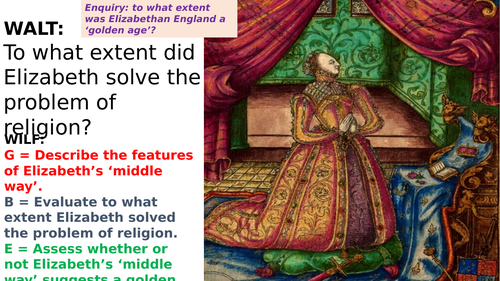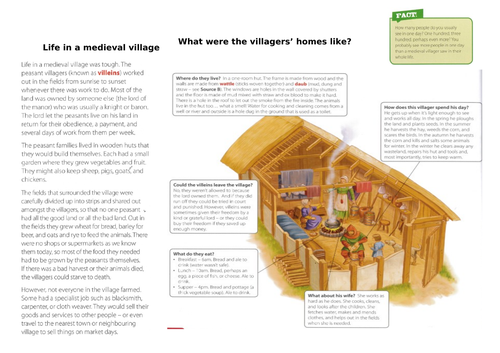
58Uploads
20k+Views
5k+Downloads
History

Women & Flappers in the Roarings 20s USA
Changes and limitations of the life of women in the Roaring 20s.

Æthelstan, King of the English
This lessons is part of the enquiry: ‘Who were the English (before 1066)’?
The enquiry focuses on the skill historical evidence. Overall, students will refer to five pieces of evidence (Roman skeletons discovered at Aballava fort, Sutton Hoo helmet, Bede’s account of Hadrian and Theodore, the Viking Domesday Stone, and a coin from the reign of King Æthelstan) in order to answer the enquiry question.
This lesson’s main task is a dual-coded narrative of Æthelstan’s life (inspired by the work of Oli Cav). Teacher notes for the story are included on the PowerPoint. Students are to copy out the drawings one-by-one on their blank version. After each strand they then retell the story using only their images. At the end they retell the whole story. They then convert the information into the table or written task afterwards. Other than this the resources on the PowerPoint are hopefully self-explanatory in terms of how to deliver it to students.
You can download the corresponding student booklet for free with all the required work sheets and resources.
The lesson sequence for this enquiry is as follows:
Roman Skeleton Mystery (2 lessons).
Anglo-Saxon Kingdoms and Sutton Hoo (2 lessons).
The Spread of Christianity in England.
Viking Raid on Lindisfarne.
Æthelstan, King of the English
Review lesson: Who were the English (before 1066)?

The Lost Colony at Roanoke (Tudor Exploration and Colonisation)
The mystery of the Lost Colony at Roanoke is explored in this lesson as part of a unit enquiry: ‘how did England become more connected with the wider world between 1492 -1642?’
Includes a video (from Smithsonian channel) introducing the mystery, followed by a task using five pieces of evidence for students to analyse to see what prevailing theories about the fate of the Roanoke Colony are most supported by the evidence. This is followed by an analysis of two interpretations from historians about the fate of the colony. Finally, a ‘counter the codswallop’ plenary.
Intended to be taught to KS3.

Eleanor of Aquitaine
A fully resourced lesson about Eleanor of Aquitaine intended for KS3 (Year 7). The resources include:
A starter ‘do now’ task about gender in the Middle Ages (based on prior knowledge).
An introduction to Eleanor and a knowledge check task.
A timeline task (information about her first marriage on the PowerPoint). Students use the remaining information (based on her second marriage) to complete the timeline.
Consolidation tasks based on the Writing Revolution’s ‘because, but, so…’.
Follow-up tasks based on choosing and explaining Eleanor’s characteristics.
Challenge task also included.

Anglo-Saxon Kingdoms and Sutton Hoo
This lessons (2 hours) is part of the enquiry: ‘Who were the English (before 1066)’?
The enquiry focuses on the skill historical evidence. Overall, students will refer to five pieces of evidence (Roman skeletons discovered at Aballava fort, Sutton Hoo helmet, Bede’s account of Hadrian and Theodore, the Viking Domesday Stone, and a coin from the reign of King Æthelstan) in order to answer the enquiry question.
This lesson involves a series of maps to investigate the makeup of the British Isles in the post-Roman world. It then investigates objects from the Sutton Hoo burial. The lesson contains all necessary resources including starters and plenaries. One optional additional task requires the SHP Y7 textbook, but this task is strictly optional. The resources on the PowerPoint are hopefully self-explanatory in terms of how to deliver it to students.
You can download the corresponding student booklet for free with all the required work sheets and resources.
The lesson sequence for this enquiry is as follows:
Roman Skeleton Mystery (2 lessons).
Anglo-Saxon Kingdoms and Sutton Hoo (2 lessons).
The Spread of Christianity in England.
Viking Raid on Lindisfarne.
Æthelstan, King of the English
Review lesson: Who were the English (before 1066)?

Elizabethan Religious Settlement (Middle Way)
This is the introduction to a series of lessons, aimed at Y8, based around the inquiry: to what extent was Elizabethan England a Golden Age? Each lesson comes back to and refers to the arguments of two history teachers: Mr Oldham and Mr Williams.
The series of lessons is as follows:
Inquiry introduction.
Elizabethan Religious Settlement.
Elizabeth and the issue of marriage.
Sailors and exploration during Elizabeth’s reign.
Wealth and poverty in Elizabethan England.
Culture and theatre in Elizabethan England.
Mary Queen of Scots.
Causes of the Anglo-Spanish conflict.
The Spanish Armada.

Elizabethan England's links with the Islamic World
Tudor and Elizabethan England’s links with the Islamic World (Morocco, the Barbary Coast, and the Ottoman and Persian Empires) are explored in this lesson as part of a unit enquiry: ‘how did England become more connected with the wider world between 1492 -1642?’
Includes all traditional phases of a lesson. A guided reading resource with several linked tasks, a detailed map, challenge task, as well as an analysis of an extract from Jerry Brotton’s fantastic *This Orient Isle: Elizabethan England and the Islamic World * (2016).
Intended to be taught to KS3.

Migration to Tudor and Stuart England
Migration to Tudor and Stuart England is explored in this lesson as part of a unit enquiry: ‘how did England become more connected with the wider world between 1492 -1642?’
Includes a starter task based around the 1511 Westminster Scroll (John Blanke), followed by a mix and match task based on migration factors (why migration happens), followed by the main task: a ‘living graph’ to show the different experiences of each migrant group. The migrant groups covered are: Portuguese Conversos, European ‘alien’ migrants, Romani Gypsies, French Huguenots, Africans (‘blackamoors’) and Native Americans.
Intended to be taught to KS3.

Who were the English (before 1066)? Review lesson
This lessons is part of the enquiry: ‘Who were the English (before 1066)’?
The enquiry focuses on the skill historical evidence. Overall, students will refer to five pieces of evidence (Roman skeletons discovered at Aballava fort, Sutton Hoo helmet, Bede’s account of Hadrian and Theodore, the Viking Domesday Stone, and a coin from the reign of King Æthelstan) in order to answer the enquiry question.
This lesson is the review and final lesson of the enquiry. Students tie together the different sources studied throughout the different lessons to answer the enquiry question. The resources on the PowerPoint are hopefully self-explanatory in terms of how to deliver it to students.
You can download the corresponding student booklet for free with all the required work sheets and resources.
The lesson sequence for this enquiry is as follows:
Roman Skeleton Mystery (2 lessons).
Anglo-Saxon Kingdoms and Sutton Hoo (2 lessons).
The Spread of Christianity in England.
Viking Raid on Lindisfarne.
Æthelstan, King of the English
Review lesson: Who were the English (before 1066)?

Empress Matilda, Lady of the English
A lesson intended for KS3 (Y7). Is a fully self-contained lesson. Resources include:
A thought-provoking starter task.
General sources on medieval women.
A cropped video introduction to Matilda embedded into the PowerPoint (from the show ‘England’s Early Queens’.
A guided reading task on the story of Matilda and how gender affected her power in the medieval world.

Guerrilla Warfare and Vietcong tactics. Vietnam War. USA.
A self-contained lesson on VC tactics using during the Vietnam War.

Edward the Confessor - a good king? Pre-Norman Conquest KS3 lesson
A self-contained lesson to be used with KS3 prior to Norman Conquest topic.

To what extent was Elizabethan England a Golden Age? Enquiry Introduction.
This is the introduction to a series of lessons, aimed at Y8, based around the inquiry: to what extent was Elizabethan England a Golden Age? Each lesson comes back to and refers to the arguments of two history teachers: Mr Oldham and Mr Williams.
The series of lessons is as follows:
Inquiry introduction.
Elizabethan Religious Settlement.
Elizabeth and the issue of marriage.
Sailors and exploration during Elizabeth’s reign.
Wealth and poverty in Elizabethan England.
Culture and theatre in Elizabethan England.
Mary Queen of Scots.
Causes of the Anglo-Spanish conflict.
The Spanish Armada.

'Who were the English?' - Student Booklet
This is the student work booklet attached to the lesson sequence and enquiry question: ‘who were the English (before 1066)?’.
The lesson sequence is as follows:
Roman Skeleton Mystery (2 lessons).
Anglo-Saxon Kingdoms and Sutton Hoo (2 lessons).
The Spread of Christianity in England.
Viking Raid on Lindisfarne.
Æthelstan, King of the English
Review lesson: Who were the English (before 1066)?
This workbook features all the necessary resources for all the lessons of the enquiry (therefore no additional printing is required). It also features a Meanwhile Elsewhere homework task (credited. Available separately online).




















